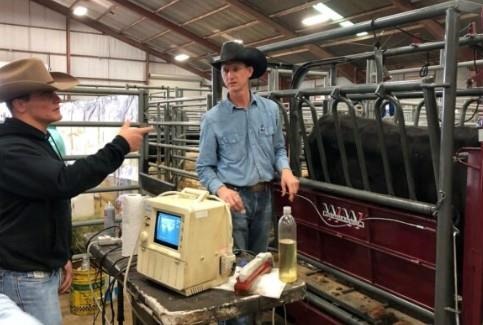The Food and Agriculture Organization of the United Nations (FAO), through its Emergency Centre for Transboundary Animal Diseases (ECTAD), kicked off a two-week training course on animal quarantine management in Sing District, a border area between Lao People’s Democratic Republic and China. The training course aimed to accelerate safer cattle trade between the two countries and improve cattle export to China.

The activity is part of the FAO-China South-South Cooperation Project on transboundary animal diseases control in the Greater Mekong Subregion (GMS), funded by the Ministry of Agriculture and Rural Affairs of the People’s Republic of China (MARA), and in close collaboration with the Department of Livestock and Fisheries (DLF) of the Lao People’s Democratic Republic’s Ministry of Agriculture and Forestry (MAF).
Lao animal quarantine and health officers, farmers, livestock traders and village veterinary workers are expected to learn quarantine and health requirements for cattle to be exported to China, which the protocol was signed by the General Administration of Customs of China (GACC) and MAF in 2019 and revised in 2022. In the protocol, cattle are required to be quarantined in the fattening zone for 45 days and quarantine zone for 30 days located in Sing District, before exporting to China. This protocol was released to minimize the risk of disease transmissions of foot-and-mouth disease (FMD) and lumpy skin disease (LSD) – two common livestock diseases in the country – along the value chain.
Better control of transboundary animal disease will not only improve the livelihoods of agricultural communities but also boost economic growth by stimulating exports to the neighbouring country. According to data from GACC, more than 2.3 million tonnes of beef were imported to China from all over the world in 2022, with only less than one percent coming from the Lao People’s Democratic Republic.
Better production, better life
The DLF Director-General Vilayphone Voraphim applauded this trilateral initiative. “Our country earned an annual income of USD 54 million from livestock exports to China. This activity comes at the right time as the government aims to boost cattle export, with a targeted USD 100 million profit in 2023,” as she highlighted that China has offered the cattle quota for Lao People’s Democratic Republic. “There is a great potential for Lao farmers to become bigger cattle exporters. We support Lao farmers in complying with requirements set by the Chinese authorities,” she added.
In parallel, FAO has continuously supported the Government of Lao People’s Democratic Republic to strengthen its capacity to prevent, detect and control animal diseases. “We are very pleased to work with DLF and MARA to promote safe cattle trade to Lao farmers and authorities. Reduction of animal disease risk along the cross-border value chain will lead to healthier cattle – and happier farmers,” said Kachen Wongsathapornchai, FAO ECTAD Regional Manager in Asia and the Pacific.
Click here to see more...